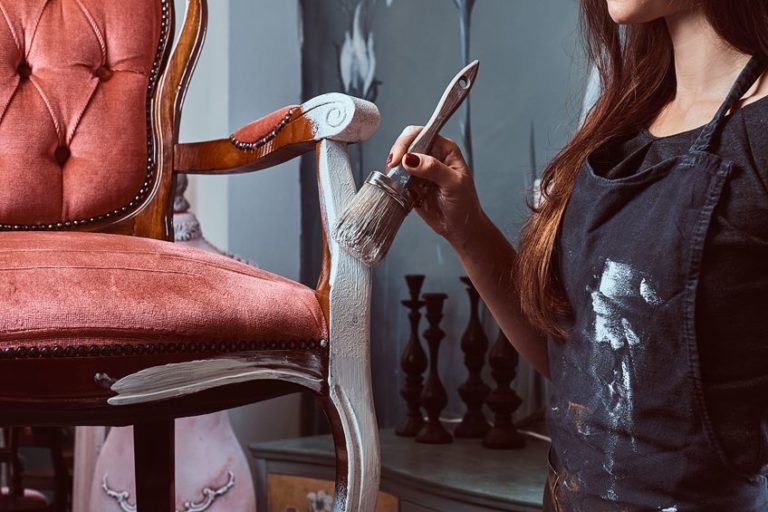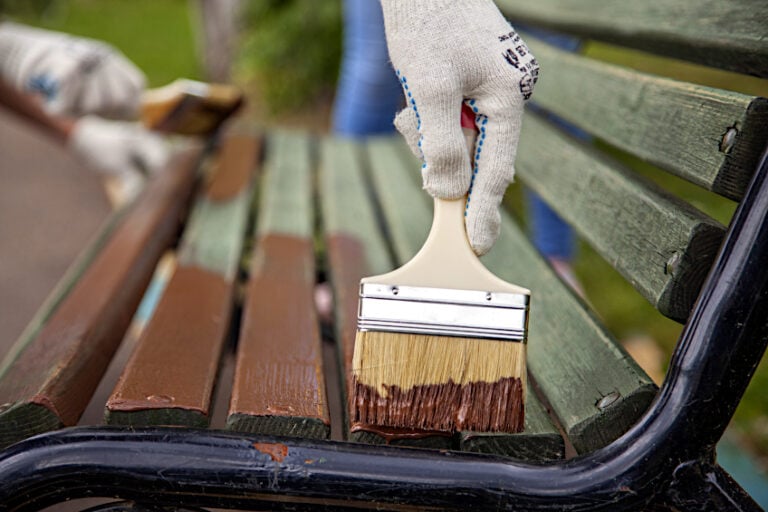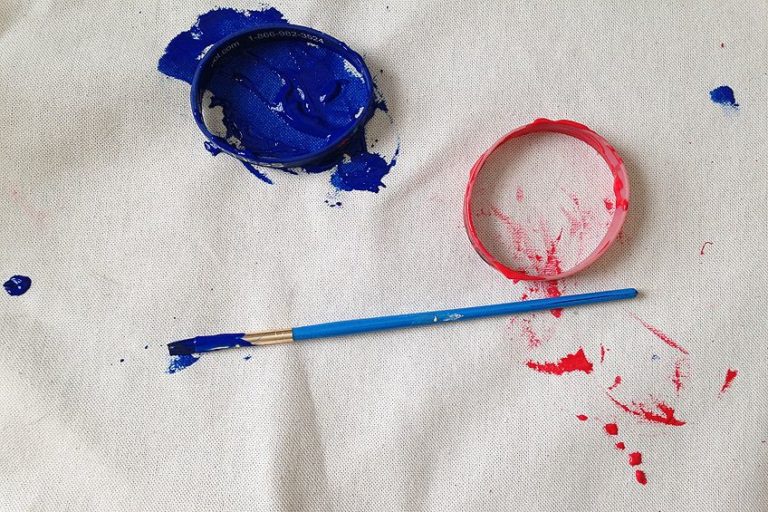Painting Surfaces for Acrylics – What Surfaces Can You Paint?
This post may contain affiliate links. We may earn a small commission from purchases made through them, at no additional cost to you.
Acrylic paint has been around since 1934, and ever since its introduction, people have been using it on a wide variety of surfaces. There are an incredible number of surfaces that acrylic paint can adhered to, but not every surface is capable of receiving acrylic paint well. If you’re unsure which surfaces are capable of handling acrylic paint, we’ve prepared a short guide detailing which surfaces are conducive to receiving acrylic paint and how to prepare said surfaces before attempting to apply your first coat. If you’re unsure about whether or not your surface is capable of being painted with acrylic paint, it’s always best to test your paint out on a spare piece of board. That being said, here are the different surfaces you can paint using acrylic paint.
Table of Contents
Why Is the Surface You Are Painting on Important?
When painting any surface, it’s important to understand the properties of the material you’ll be painting. Not only will you know what the stress tolerances and applications of said material are, but you’ll know whether or not acrylic paint will stick to it. Some materials are better suited to receiving acrylic as a surface coating, while others are not. Why? Well, this could be due to a number of reasons. The most common reason is surface friction. Like any other surface coating, acrylic paint can only adhere to surfaces that have a certain amount of surface friction or porosity. This essentially means that if a surface isn’t “rough” enough, certain surface coatings like acrylic paint won’t adhere to it.
Sheer surfaces are basically surfaces that are really smooth. They don’t have a lot of surface friction and/or porosity from their surfaces in order to allow the paint to stick to them. While there are ways to work around this, the paint won’t naturally adhere to these surfaces very well. Identifying these surfaces can be challenging, so if you’re unsure simply test your paint out on some spare material.
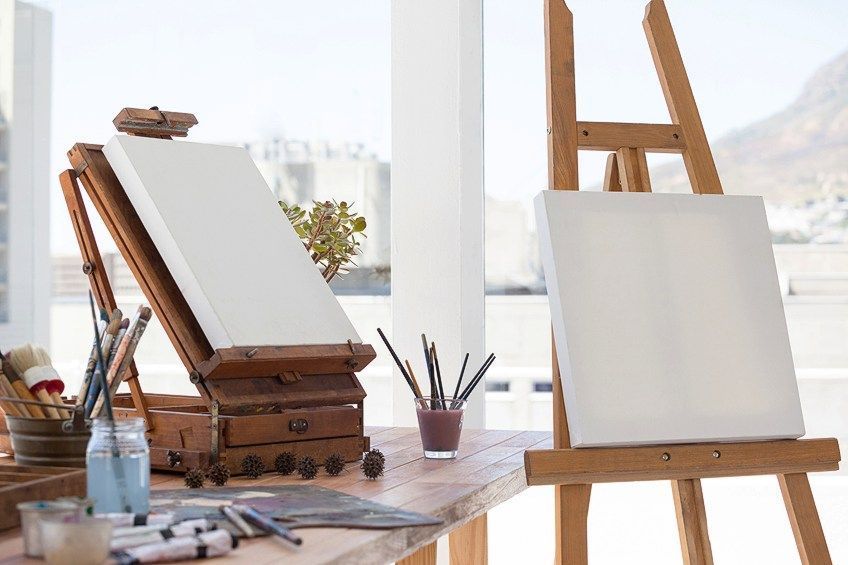
If you’re an experienced wood crafter or DIY enthusiast, then you know that priming and preparing a surface beforehand tends to make the paint adhere to pretty much anything. However, this isn’t always the case, and therefore you should ensure that even if you have a primer that you think will work on a given surface your material is actually capable of accepting acrylic paint.
What Is Acrylic Paint Generally Used For?
As we mentioned previously, acrylic paint has been around for a really long time. On a fundamental level, acrylic paint is a colorant that has been suspended in acrylic polymer along with solvent and other elements to aid in its adhesion. This unique combination of materials makes acrylic paint one of (if not the) most versatile paint types on the face of the planet. It is therefore used in a wide variety of applications in a number of industries all around the world.
Acrylic paint has been used on wood, plastic, paper, and canvas, and can even be used as a dye for thermoplastics. This is really cool considering that oil and water-based paints have been around for far longer and are nowhere near as versatile as acrylic paints are.
How Does Acrylic Paint Work?
What makes acrylic paint so versatile is how it works. When applied to a surface the acrylic polymers and binders bond with the surface of your workpiece quickly. When allowed to dry, the solvent in the paint begins to evaporate, reducing its moisture content considerably until it dries, leaving behind the polymer and the coloring inside of it. Oil-based paint works in a similar manner but isn’t as efficient at delivering its content to a given material. Acrylic paint also dries fairly quickly and contains fewer VOCs (volatile organic chemicals) compared to oil-based paint, and even though latex-based paints contain even fewer VOCs and try quicker, they aren’t as hard-wearing as acrylic-based paints.

Surfaces That Can Be Painted with Acrylic Paint
Do you have a surface that needs to be painted? Are you thinking about using acrylic paint? Before you commit to slapping some paint on there and hope that it sticks, we’ve prepared a short list of materials that definitely can be painted with acrylic paint. Keep in mind that these are just the base materials, and derivative materials and composites can react differently depending on what else they’re made of.
That being said, let’s have a look at what materials can be painted using acrylic paint.
Canvas Surfaces
The most common surface that acrylic paint is used on is a canvas. This makes sense considering how many beautiful acrylic artworks exist around the world. Acrylic paint tends to bond quite well to canvas as the paint simply bonds with the woven fibers and allows the solvent to evaporate, leaving you with an undoubtedly beautiful work of art! There are a few different types of canvas to choose from, namely light, medium, and heavyweight. The weight of the canvas refers to the grams per square inch of yarn used. Weight is influenced by density, which means that the heavier the canvas, the more yarn is used, and the denser the yarn has been woven together.
If you’re familiar with canvases, then you know that the greater the weight of the canvas the more it costs, and if you aren’t familiar, now you know. Choosing a light or heavy canvas depends on what effect you intend to give your painting, and whether the effect will complement the subject matter, composition, style, and tone of your artwork. As far as painting surfaces for acrylics go, the canvas is a sure-win every time.

There are many canvases for sale both in-store and online, which can make it challenging to choose one. Aside from settling on the weight of the canvas, you would like; you’ll also have to choose between pre-primed and raw canvases. While you can prime your canvas yourself, pre-primed ones can save you some time, but they tend to be more expensive.
Paper Surfaces
It should go without saying that if paint can be used on canvas, it can safely be used on paper too. However, if you choose to use paper as a painting surface you should keep in mind that only acid-free paper can be used when painting with acrylic paint. Why? Acid tends to have a negative reaction when introduced to acrylic paint, which could result in a poor finish. You should be able to paint on any non-acidic paper type, including printing paper and the kind that you would find in most notebooks these days. In terms of painting surfaces for acrylics, paper is one of the safer options as there aren’t many variables for you to consider, all that you need to do is whip out your paint and get to work.
There are some advantages to painting on paper using acrylic paints. For one, it’s easy to blend colors, and even easier to water your paint down to create a cool wash. However, disadvantages to using acrylic paint on paint exist too.
For example, acrylic paint dries darker than when it is applied, and it dries quickly on paper, which means you’ll have to work quickly too. The paper also absorbs a lot of paint, which could mean that your paper becomes saturated if you’ve overapplied it. This can lead to your paper becoming weak and tearing, especially if your paper is suspended. That being said, apply your paint conservatively, even it out across the surfaces, and work on a solid, horizontal surface.
Wooden Board Surfaces
If you’re looking for sure-fire things you can paint on with acrylic paint, wood should be at the top of your list. Wood is a great medium to paint on and has been for centuries. Even though acrylic paint is fairly new as far as paints go, it tends to take well to wood, bonding with exposed wood fibers and creating a radiant tone. The cool thing about wood is that there are many different types of wood you can paint on. One of the most popular options is a solid wood board. These are woods that have been cut directly from trees, and processed for the creation of things like furniture and homeware. That being said, there are other options aside from solid wood board, which tends to be expensive. The other option you have if you’d like to paint on a wood board is engineered wood.
Engineered wood boards are made of wood that has been crushed, and then joined together using a combination of heat, pressure, and resin in order to compress them into the shape of a wood board. These are cheaper than solid wood boards and quite readily available.
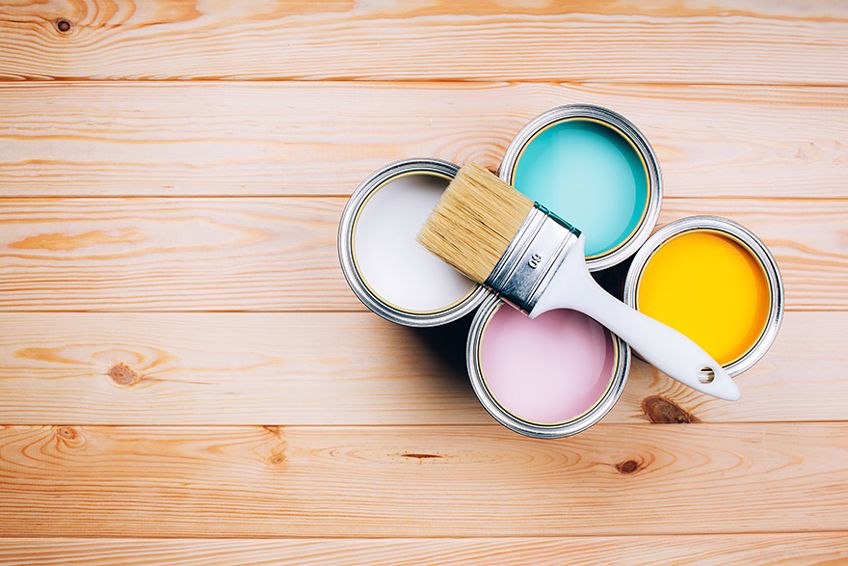
There are many things you can paint on when it comes to engineered wood boards. You have particle board, medium-density fibreboard, plywood, veneer, and even composite board. These are easy to paint on if unfinished, and if you’re looking to buy material in bulk, this would be the way to go considering how cheap they can be. The advantage of painting on these is that they don’t require a lot of preparation in order to properly accept acrylic paint. Paint tends to bond to the surface in a reasonable amount of time compared to materials like cardboard and paper, and if you make a mistake while painting, you can simply wipe the board clean and sand the surface to start anew.
Preparation Process for Wood
Since wood seems to be about as popular as canvas and paper these days, you should also know that there are a few disadvantages to painting on it too. For one, whether you’re working on solid wood or engineered wood, it is quite absorbent, which means you might need to apply more than one coat. Additionally, you could have to resize your wood yourself or pay for it to be cut upon purchase. You should also know that wood needs to be adequately prepared before it can be painted.
Before applying your paint, you might want to give the surface of your board a light sanding with some sandpaper. Once the board has been sanded, you should apply an acrylic primer to mitigate the absorption of your paint that we mentioned previously.
Fabric Surfaces
Painting on fabric is something that has been done for a long time, and for good reason. Finding a piece of woven fabric and simply painting it with various designs and colors is easy, inexpensive, and can be done without a ton of preparation. That being said, acrylic paint takes really well to fabric, sometimes even more so than dedicated fabric paints. If you’re having trouble deciding what to paint on, and don’t quite want to commit to canvas just yet, the fabric is a great place to start. It will allow you to develop your confidence and skills without having to worry about the price of a canvas, plus you can pick fabric up pretty much anywhere. Old thrift stores, major retailers, and online suppliers all usually stock stretched fabric you can use to paint on.
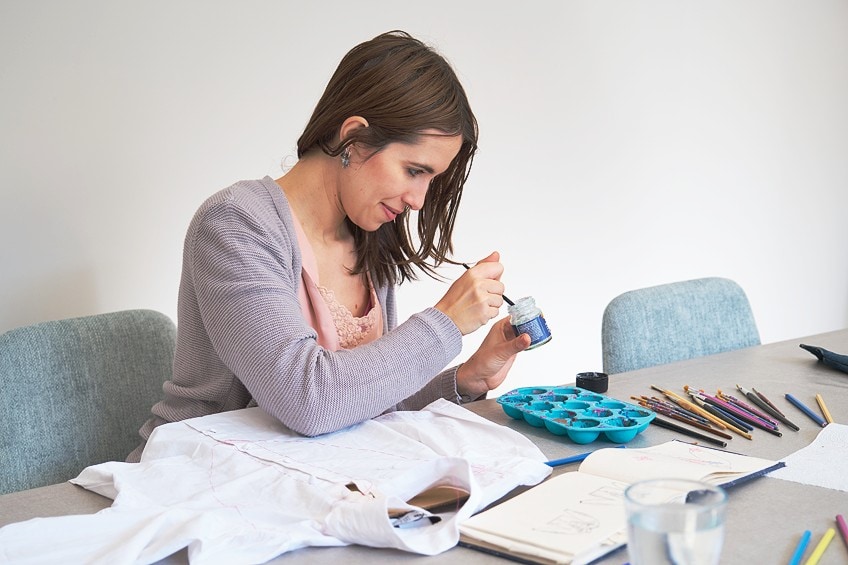
Since the fabric has similar characteristics to canvas, painting on it has many of the same advantages. For one, your paint won’t over-saturate the material, and if you don’t want to prime it you don’t need to. As you would with canvas, you can practice impasto techniques on fabric to better your skills, or practice fanning and spreading paint. There are a few disadvantages to painting on fabric though. For one, if you don’t have a backing structure, it could move around while you’re painting. If you’re buying your fabric second-hand, it can be difficult to tell how it will react to your paint, as well as how it will react long-term when exposed to heat or moisture. All things considered though, it is a great material for painting with acrylic paint.
Silk Surfaces
Do you have some money to burn? Do you want to create something truly unique? Do you like a challenge? If yes, then boy do we have the material for you! Silk can be painted with acrylic paint, but you should ensure that your workpiece is only used in applications where it will be allowed to flow freely, like a banner or a free-flowing top. Acrylic paint tends to stick fairly well to silk, just ensure that you don’t allow the fabric to move while you’re painting. This can be difficult considering how inherently free-flowing silk is as a material, so if you can clamp it down or suspend it somehow, you’ll have a much easier time working with it. There are a few advantages to using silk as your material of choice.
First off, if you’re wondering what to paint on and really want a unique material, this is it. Additionally, painted silk looks simply stunning, and can be used to create intricate designs if you take the time to consider how your design will look when the material moves. That being said, there are some notable disadvantages to working with silk as well. As we mentioned previously, silk can be challenging to hold still while you’re painting it.
This in itself can be quite frustrating, but even more so can be finding just the right brush for the job. Is it worth it? Well, this depends on how committed you are to using silk as your medium, but overall we think that if you’re willing to put in the time and effort, the results are well worth the work!
Metal Surfaces
Surprisingly, metal tends to take to acrylic paint quite well. Whether your metal is ferrous or non-ferrous, acrylic paint should take to the surface with relative ease, given that your surface has been cleaned, prepared, and primed to receive it. Acrylic paint can be applied with a brush or sprayer when it comes to metal surfaces. The majority of the work associated with painting metal using acrylic paint comes in the preparation stage. Ensuring that the surface is cleaned thoroughly is the first step, then ensuring that you sand/etch your metal surface and apply primer. Once this is done, you can go ahead and start painting as soon as your primer has set.
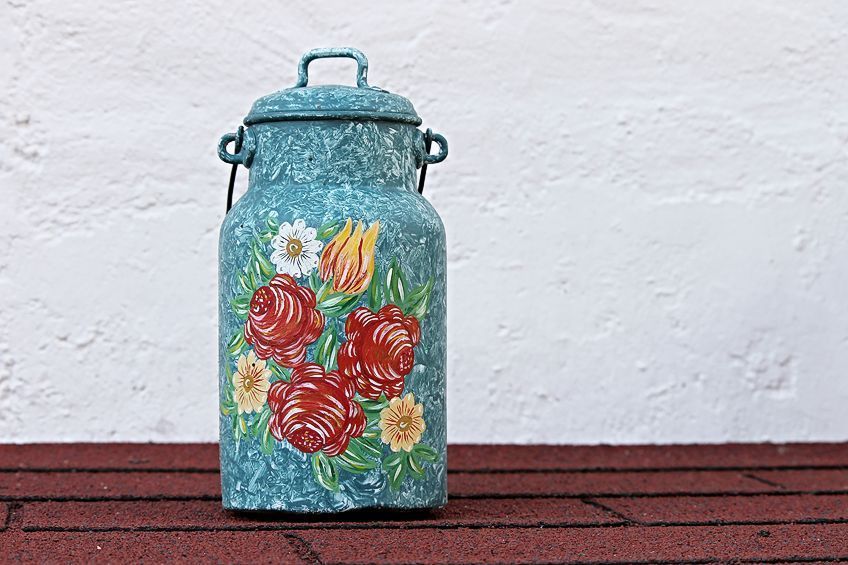
Metal might not be one of the best surfaces for acrylic paint, but it is a unique medium that many people have used to create impressive works of art. Acrylic paint on metal tends to look quite bright and sleek compared to other paint types, and if you make a mistake, it can simply be wiped off with some solvent, soap, and water. As with any material, there are some notable disadvantages to using acrylic paint on wood too. For one, you will need to prepare the surface correctly in order for the paint to adhere and achieve a decent finish. This can be labor intensive, not to mention that it can chip quite easily if you don’t seal the surface, which requires even more elbow grease on your part.
Plastic Surfaces
Plastic and acrylic paint pretty much go hand in hand. Acrylic paint is by far the best option when it comes to painting pretty much any plastic surface. Why? Acrylic tends to bond with plastic very well and produces quite a vibrant color if a high-end paint is used. Like wood and metal, in order to ensure the finish looks nice and even, you should prepare plastic beforehand. Plastic surfaces that can be painted include chairs, tables, toys, plumbing, and even protective smartphone cases. There are many advantages to using plastic as your paint medium. For one, plastic won’t really absorb any of your color intensity, and acrylic paint tends to last a reasonable amount of time on plastic even when it isn’t sealed.
However, there are some notable disadvantages to using acrylic paint on plastic too. Like wood and metal, you will have to clean, sand, and prime the surface before your paint can be applied. This is time-consuming, and the sanding process can leave you with little plastic particles to clean up once you’re done.
Glass Surfaces
There are many surfaces for acrylic paint to be used on, but glass is a crowd favorite. Glass might seem like a strange medium to use, but if you think about existing examples like stained glass windows in churches, it starts to make a lot more sense. Like metal, wood, and plastic, there is a bit of preparation involved in using acrylic paint on glass. What type of preparation, you ask? First, ensure that your glass is clean and allow it to dry completely. Once you’re sure it’s dry, you can prime it with some denatured alcohol and rub all of the surfaces that you’d like to paint thoroughly. Allow the alcohol to evaporate and then apply your acrylic paint.
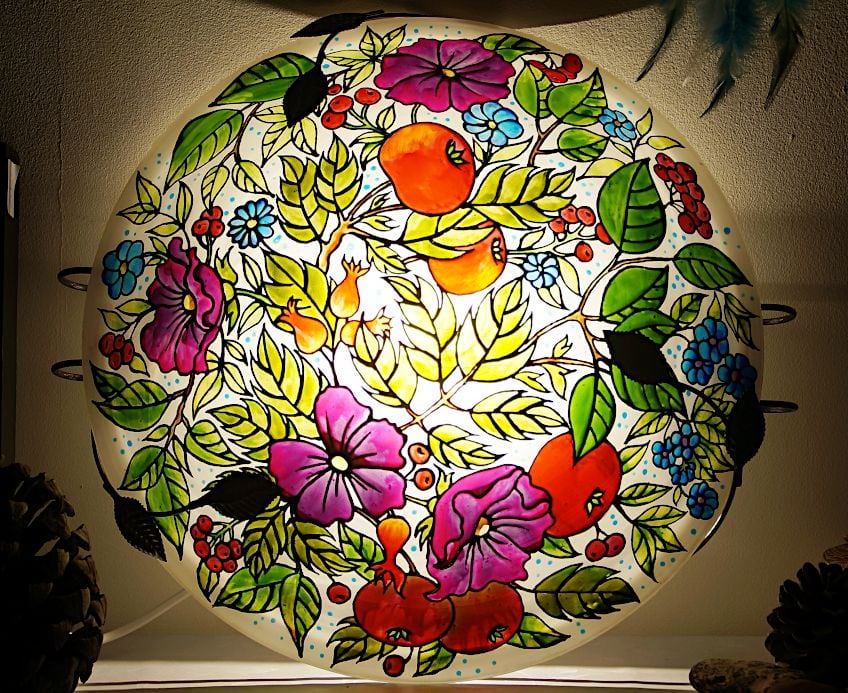
Painting glass using acrylic paint has many aesthetic advantages to it. For one, when light shines through your workpiece your paint will be illuminated, a lot like stained glass. Additionally, paint takes on a unique appearance on glass, and when prepared correctly, tends to stick to it quite well compared to some other materials on this list. There are some disadvantages to using acrylic paint on glass too. One is that if you fail to prepare the glass adequately, your paint might run depending on the quality and consistency of the paint. Glass can also be challenging to hold still depending on its shape, and the most glaring downside to using glass is that thin glass types can shatter if impacted or dropped, ruining your workpiece.
Now that you know what acrylic paint is, how it bonds to a surface, what surfaces it can be used on, as well as the advantages and disadvantages of using each material, it’s time for you to get out there and put your newfound knowledge to the test! Remember to prepare your surfaces if necessary, and to use a good quality acrylic paint whenever possible.
Frequently Asked Questions
Is Acrylic Paint Durable?
Yes, there are many surfaces for acrylic paint to be used on, and it tends to be quite durable on most of them. If you would like your acrylic finish to be more durable and less susceptible to damage, you should consider sealing the surface after painting.
Does Acrylic Paint Work on Metal?
Yes, if the surface is prepared correctly, acrylic paint will absolutely work on metal! You should ensure that you use the correct primer and that your surface has been cleaned before attempting to paint it. Failing to do so could result in poor adhesion and/or a poor finish.
What Can Acrylic Paint Be Used On?
Acrylic paint can be used on a large number of surfaces. It is arguably the most versatile paint out there and can be used on wood, paper, plastic, canvas, glass, and even fabric. Acrylic paint tends to perform quite well on all of these surfaces.
Larissa Meyer is a 32-year-old mother from Michigan and creative spirit since childhood. Her passion for painting and drawing has led her to an education as an illustrator and a career as a freelance graphic designer. She has a Bachelor of Fine Arts in Illustration and a degree in Graphic Design. Larissa is a talented artist who is able to master a wide range of styles and techniques to bring her artistic vision to life. Her greatest passion is currently fluid painting and epoxy resin art. Larissa’s love for art and her knowledge and experience in illustration make her the perfect Creative Director for our fluid-painting.com team. She is the creative head of our team and shares her passion and knowledge with our community through articles and tutorials.
As a mother of a 2-year-old daughter, Larissa also understands the importance of fostering creativity in early childhood. She uses her experience and knowledge to help other parents inspire their children and develop their artistic skills as well.
Learn more about Larissa Meyer and about us.




